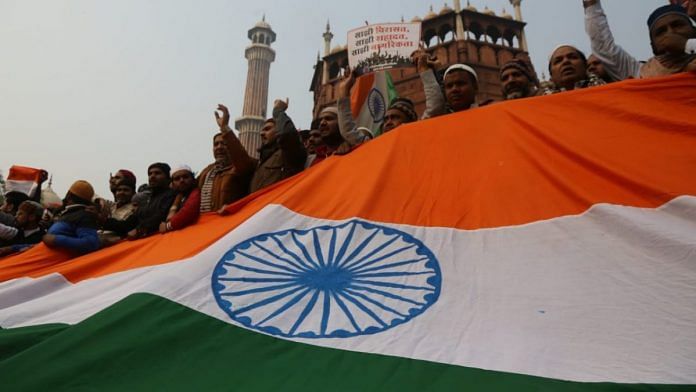
Thank you dear subscribers, we are overwhelmed with your response.
Your Turn is a unique section from ThePrint featuring points of view from its subscribers. If you are a subscriber, have a point of view, please send it to us. If not, do subscribe here: https://theprint.in/
The ethos of “Unity in Diversity” imparted to the nation by our founding fathers & mothers is often a much-celebrated cornerstone of India as a republic. We have been codified to believe that our diversity is a strength. This unwarranted premise is laid bare in the face of another language debate. Strengthened by diversity is a free-market idea, where people with different backgrounds bring in different perspectives to problem-solving. However, even corporates actively attempt to have a unifying culture and shared ambitious goals. The same rules apply to nation-building, especially in the face of a gaping lack of cultural assimilation.
India is a unique experiment in the history of nations with so many visible differences across regions as also expressed by one of the greatest leaders of the modern era, Mr. Lee Kuan Yew (Source). These differences have only been addressed passively in the 75 years of independent history as evident from the limited cross-state cultural exchange. Based on a World Bank report, only 12% of our tracked internal migration in 2011 was across state boundaries and it is the lowest among 80 countries (Source). This movement is not natural for most Indians because of ingrained differences (Source).
Along with visible aspects like language, food, and traditional practices, sociological dissimilarities exacerbate the “otherness” across regions (Source). Different regions have charted a different course of medieval history (Source). Each princely state shared a unique relationship with the British Raj and hence, the freedom struggle varied across states (Source). Most importantly, at the time of independence, not all states were equally poor, equally illiterate (Source), and equally backward. For that brief period though, we did share a strong bond solidified by stories of British oppression and a collective goal to overthrow the colonial rule.
However, the past 75 years haven’t seen active efforts to build a shared history and collective Indian conscience, similar to the idea of an “American dream”. Our polity has tried to bridge regional differences on one hand by looking for sources of a shared Hindu history far into the past, and on the other hand, by adopting a “don’t talk about the elephant in the room” policy, which has led to the building of linguistic and cultural silos.
We must address the obvious differences head-on through temporally modern solutions. Here I lay out some rudimentary ideas that in my opinion will create more shared stories of the new India:
- Three Language Formula: In my private school (in the 2000s), we had options to opt for French and German as an additional language but never had an Assamese or Tamil option readily available. This is true in most schools in my city. A breakaway change has been introduced in the New Education policy with the three-language formula, where at least two Indian languages would form part of a student’s curriculum (Source). This trend should extend to higher education. It would be a testament to our diversity if a lady from Orissa finishes her Ph.D. thesis in Tamil language at the University of Rajasthan.
- Reclaiming our history from Delhi: Foremost is the awareness of India’s different regions beyond the type of soil, crops, and minerals taught in our Geography classes. We have different identities that have grown from our vastly different histories. As Vikram Sampath articulated in the India Today Conclave (Source), “India needs to reclaim its history from Delhi.” Our middle school history needs to take a more holistic view with chapters categorised not in terms of the invasion era but categorised with respect to regions and how they phased during different periods of the history. This would instil some common sense in a Rajasthani middle-schooler that a Bengali middle-schooler had a different ancestry.
- Know your fellow citizens: Enable semester exchange programs for secondary and higher secondary school students within the country. My school had such programs with schools in Germany and Japan (in the 2000s). Now, it seems counter-intuitive that we had to look so far for cultural exchange when we can easily achieve most goals of cultural exchange with any other part of the country. A successful example of over 3 decades is the Navodaya Vidyalaya Samiti which has a pan-India cultural exchange program for school students (Source). In fact, with cultural exchange within the country, we may be able to offer this opportunity to far more students.
Diversity cannot be taught from a book or newspaper. It can only be experienced. We need to reimagine the stories that we collectively believe in as a nation. This can help bridge the day-to-day differences that are politically misused time and again. The path we take today will determine if the slogan of “Unity in Diversity” is a reflection of our personalities or just a notional badge of honour for us Indians?
These pieces are being published as they have been received – they have not been edited/fact-checked by ThePrint.
Also read: Hindi’s hegemony didn’t start with NEP, Amit Shah or Ajay Devgn. It’s been on since 1947

COMMENTS